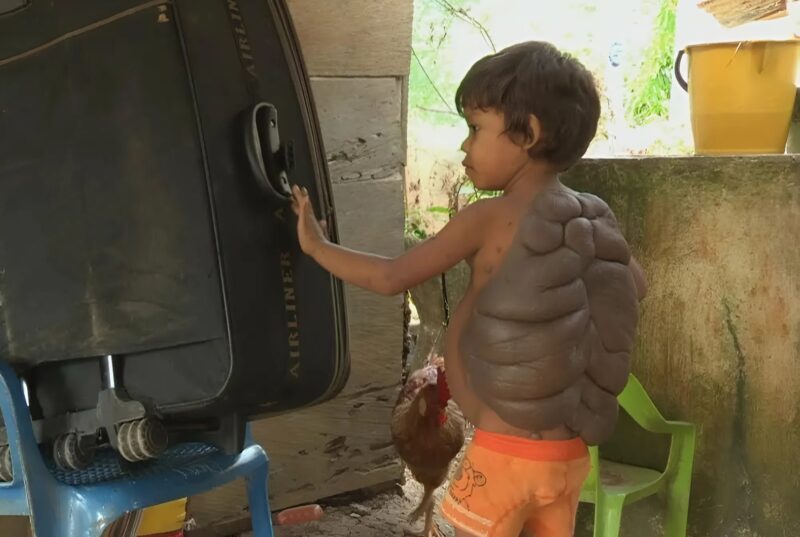Stones were thrown at him and he was teased: How does the turtle boy now look?
Didier Montalvo, a Colombian, was always the odd one out. His classmates shunned him, referring to him as the “turtle boy.” And it had nothing to do with his slowness.
And it had nothing to do with his slowness.  He had a massive growth on his back that looked like a turtle’s shell. However, he had surgery after years of hardship, and this is how he now appears
He had a massive growth on his back that looked like a turtle’s shell. However, he had surgery after years of hardship, and this is how he now appears 
 Stones were thrown at him and he was teased: How does the turtle boy now look?
Stones were thrown at him and he was teased: How does the turtle boy now look?
Didier started to struggle to move as the expansion persisted. In addition to limiting his range of motion, the growth caused him to gain weight, which made it challenging to engage in normal physical activity.

Didier had a congenital melanocytic nevus, a rare genetic condition that affects only 1% of people worldwide, according to the devastating diagnosis made when Didier’s mother, Luz, finally sought medical attention.
Physicians cautioned that the growth might turn cancerous if surgery was not performed. But even so, the family was unable to pay for the procedure, and they were unable to receive the required care for a considerable amount of time.
Stones were thrown at him and he was teased: How does the turtle boy now look?
Didier had to deal with severe prejudice from his peers and even adults in addition to his health problems. They avoided him, made fun of him, and occasionally even threw stones at him.
Stones were thrown at him and he was teased: How does the turtle boy now look?

When famed British surgeon Neil Bulstrode learned of Didier’s issue in 2012, everything changed.
He made the decision to provide free assistance and went to Colombia to conduct the surgery. When the growths were successfully removed by the specialists, Didier’s life took a significant turn.
Stones were thrown at him and he was teased: How does the turtle boy now look?

He can now live a regular life, and after noticing his progress, his fellow villagers accepted him and let him go to school and socialize with other kids.
Stones were thrown at him and he was teased: How does the turtle boy now look?

Didier’s tale serves as an illustration of how one can recover their human dignity in the face of the most difficult challenges.

